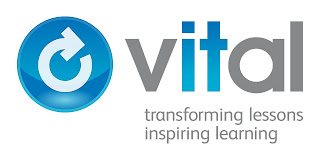 I recently read an impressive document analysing the functionalities of e-Portfolios. The above graphic gives a good idea of the range of uses to which an e-Portfolio can be put. However, traditional thinking tends to underline the belief that we should use different e-Portfolios for different purposes.
I recently read an impressive document analysing the functionalities of e-Portfolios. The above graphic gives a good idea of the range of uses to which an e-Portfolio can be put. However, traditional thinking tends to underline the belief that we should use different e-Portfolios for different purposes.To be fair to the authors, K. Himpsl and P. Baumgartner of Danube University, Krems, Austria, their article set out to identify e-Portfolio software in (then) current use and, unfortunately they were not aware of my progress with eFolio for the UK and Europe. I include their abstract, below, but for a pdf copy of their full report (7 pages), you need to register here first.
Abstract—E-Portfolios are a new type of software and it is still relatively vague to determine, which functions are obligatory – that is which functions constitute characteristic features – and which functions are just optional (“nice to have“). This article describes the concept and the preliminary results of a research project which was conducted to evaluate E-Portfolio software, and aims at providing decision guidance for implementing E-Portfolios in higher education - first and foremost from the pedagogical perspective. Which recommendations can be made to an institution which now wants to implement electronic portfolios with a certain objective?
My argument is not against their well documented analysis of some of the available e-Portfolio software available to HE but of the conclusions that they come to as in the above graphic.
As any who have been following this blog will understand, I present eFolio as being the perfect e-Portfolio solution for ALL of the 12 functionalities, and much more, within the one e-Portfolio and also concurently. This is my whole point about eFolio. The developers in Minnesota have produced a system which allows the one set of artefacts to be re-purposed in a variety of ways. The learner's one eFolio can therefore present to different audiences, for different purposes, even concurrently. Furthermore, the different 'views' can visually support differing aspects of one's whole life. For instance, different audiences could see my eFolio as representing me as a Technologist, as a Human Resource manager, as an environmentalist or a charity worker and yet, at the same time, I could be collaborating with my peers concerning an article that I might be in the process of writing.
There is an inevitable implication throughout the paper (constrained by the funding system), that the e-Portfolio is only of use in Higher Education. It is thus inevitable that no mention is made of the needs of the young, the elderly, the less-able, those involved in teaching these groups or those who wish to use e-Portfolios for community or extra-curricula studies. In other-words the vast majority of learners appear to be excluded.
However, it is worth checking out the Himpsl and Baumgartner paper if only to convince one's self of how limited all the other so-called e-Portfolio applications are when compared to eFolio.




